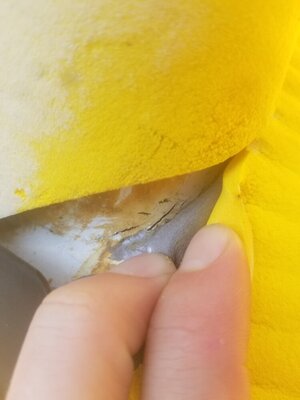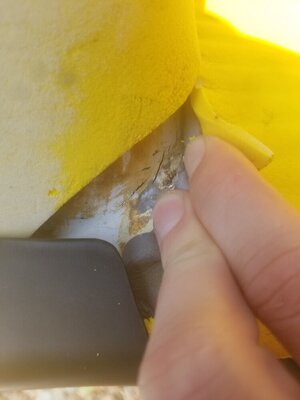Yes 1208 is lighter and easier to work with. The reason I would not add too much glass to the cracks is because if you ever want to cut it open and really fix it, you might create more work for yourself (sanding or cutting)
Yes, just sand past the gelcoat, get a nice bare fiberglass surface and wipe thoroughly with acetone. Just make sure there is no residue or junk where you will lay the glass.
No top coat on the resin, when you mix your resin you will add the corresponding amount of pigment into the resin as you mix it. That is also the time when you will add a thickening agent if needed. You will usually want to add the thickener if you are applying resin to a vertical surface. I would do 1 side at a time and position the hull so that the crack is at the bottom of the "V" any extra resin will pool in the crack. You don't want to use alot of resin, the less the better. Paint the surface where the glass is to be applied with the resin, wait 20-30 minutes or until the resin starts to get "tacky" and then lay the dry pre-cut glass onto the area. Mix a new batch of resin and lightly wet the cloth that you just laid down. You want it to completely penetrate, but not pool up and be totally soaked. I usually dab the glass with the brush. Harbor Freight sells boxes of 2" chip brushes for cheap and they work great for applying resin. If you make an order through U.S. Composites, get a small roller too, it makes getting the corners easy and getting bubbles out easy. You will have some time to work with the glass and resin, it can be pushed around a bit but not extreme. Just try to get out any bubbles and make it as smooth as possible.
P.S. Clean your roller with acetone immediately after use! If not, you'll be buying another one



